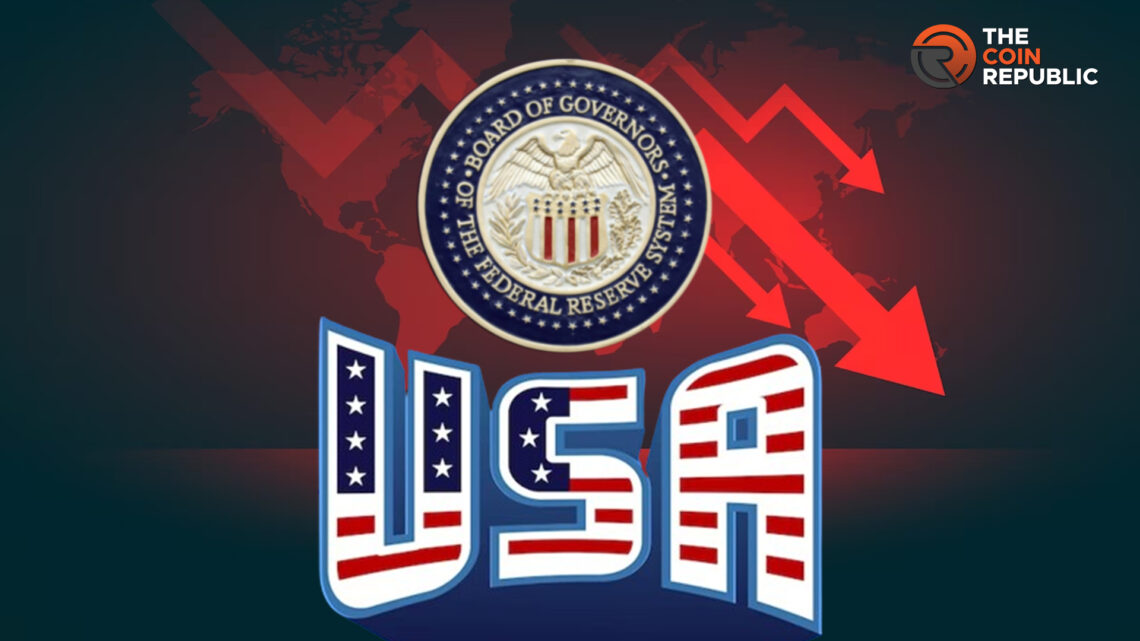- 1 Global markets are down after the CPI inflation data of the US exceeded the expectations of 2.9%.
- 2 There is an inverse correlation between interest rates and inflation in a country.
After touching the heights, the US markets have gradually started to deteriorate since the CPI inflation data came out. The substantial falling indices included NASDAQ, S&P500, Dow Jones and Russel 2000. Although the CPI inflation was expected to be 2.9%, it rose to 3.1%, which became the main cause for the slip.
Red Colors Seenin the Equity & Commodity Space
After trading for lifetime highs, US Markets had a stormy day. Jones fell more than 500 points in the intraday trading session which is the highest fall in a single day since 2023. NASDAQ on the other hand, also fell more than 300 points. Since the markets across the globe are highly dependent upon US markets, Asian markets also fell by 270 points. In the commodity space, base metals and precious metals also saw red candles.
How CPI Inflation Caused the Fall in the Markets
US Markets were on lifetime highs after the Fed stopped cutting the rates last year. There was a huge bullish sentiment all around, which made the markets sensitive. Bond yields were also falling and that meant the investors were hoping for a rate cut.
Reports from CNBC, and Yahoo Finance, , show that most of the market experts believed that the Fed would start cutting rates in the last quarter of the financial year 2023. However, due to strong market data, the likelihood of a rate cut in Q1 2024 began to diminish.
In December, retail sales surpassed predictions of 0.4%, increasing from 0.3% to 0.6%. The Fed is focused on taming inflation over fuelling growth. After the current CPI and core CPI, it is almost certain that the Fed is not going to start cutting rates anytime soon.
What is the Correlation Between Interest Rates, Inflation, and Equity?
Interest rates and inflation are inversely related. When the citizens of a country have more than enough money to spend, the demand for stocks, commodities, and goods rises and it increases their core prices. To control inflation, the central bank (Federal Reserve)can raise the interest rates applied on loans provided to commercial banks.
This rate increase, in turn, increases the interest rates for corporate and retail loans. Essentially, it makes it hard for retailers and companies to borrow money and that ultimately drives down spending in the market (or decreases demand), and further decreases inflation.
During the recessions, say 2002, or 2008 when the dramatic economic change happened, it caused fear in the markets. This fear results in people withdrawing from risky assets like stocks and indeed causing a liquidity crunch in the market. Here also the government plays the game with the interest rates.
The manipulation of interest rates does just the opposite of the above, decreasing the rate of dispersing loans. That pulls the corporations and retailers to borrow and flush the money into the markets. Currently, the inflation in the US is slightly high as compared to the expectations of the government, which is the reason why they are not decreasing rates.
Conclusion
Markets around the world are going down after trading in the blue sky for a long time. The hopes of rate cuts in March vanished as the CPI inflation data was revealed. At the moment, the Federal Reserve is prioritizing inflation control over economic growth.
Steve Anderson is an Australian crypto enthusiast. He is a specialist in management and trading for over 5 years. Steve has worked as a crypto trader, he loves learning about decentralisation, understanding the true potential of the blockchain.


 Home
Home News
News










